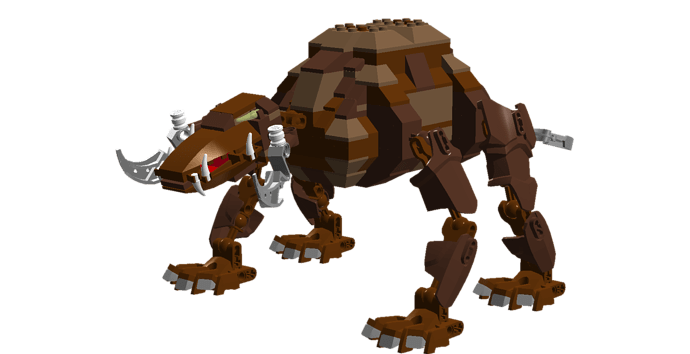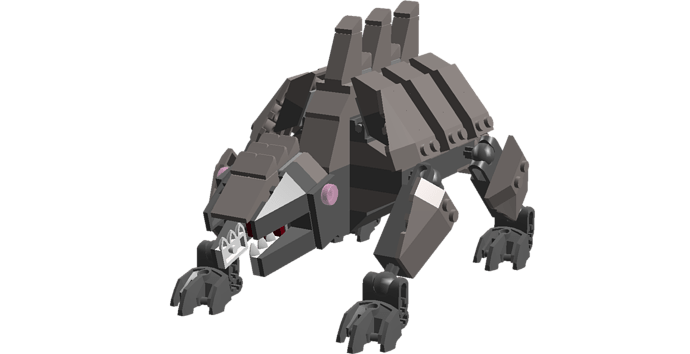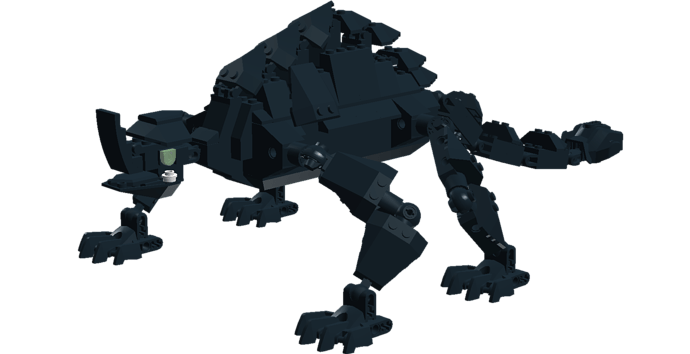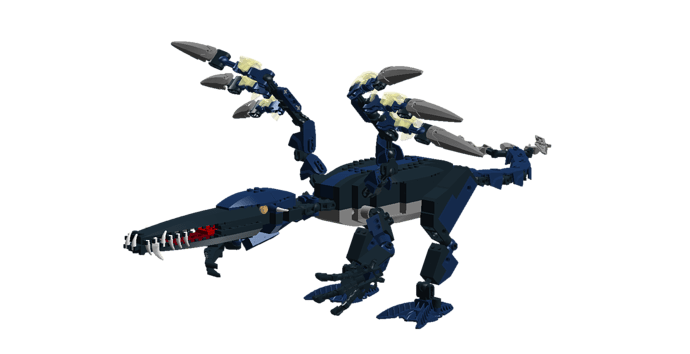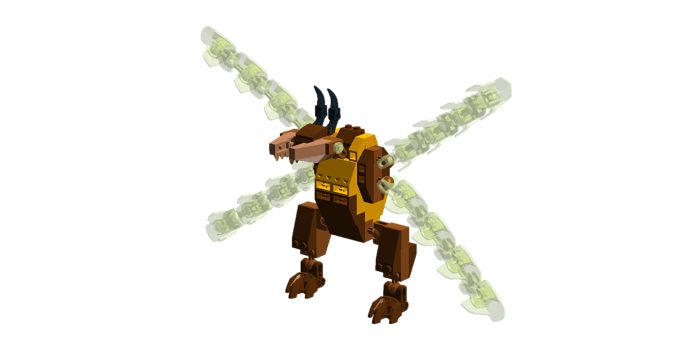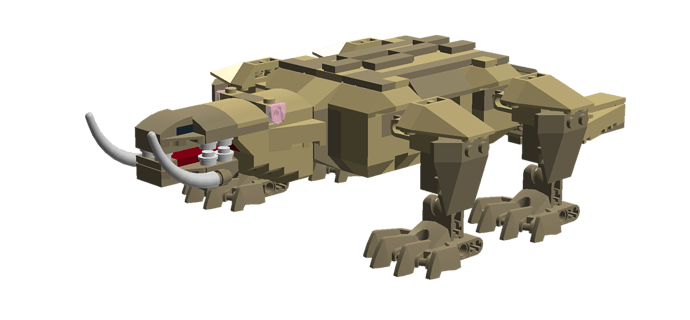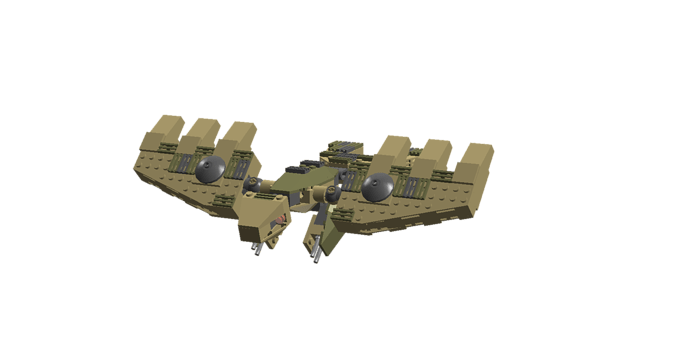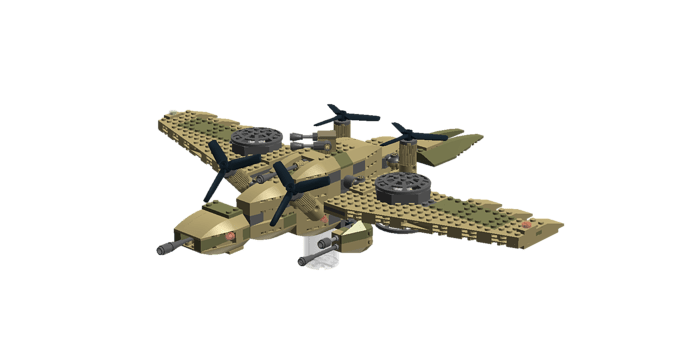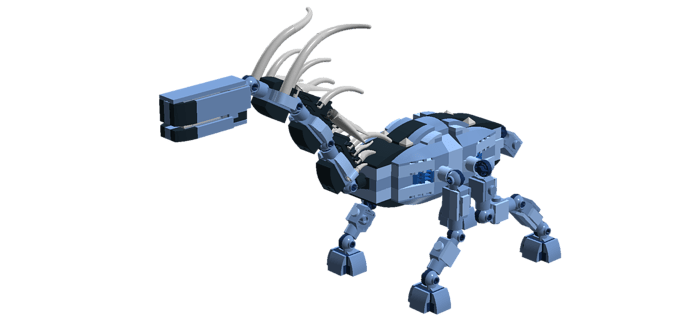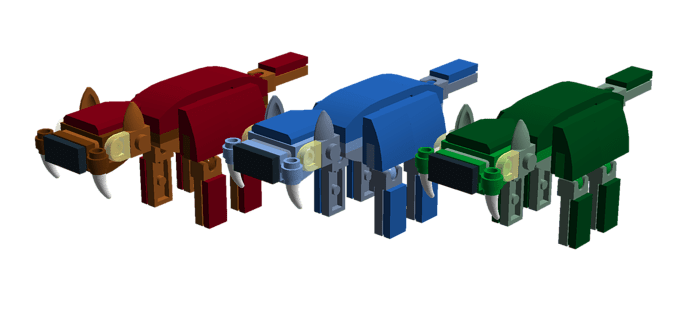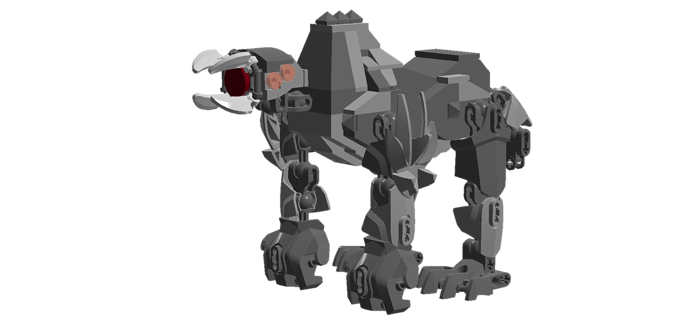Fauna are the creatures which inhabit the five landmasses of Zalero. They were the original inhabitants of this world. Though not sentient, they are essential to the ecosystem of Zalero. So far, nine species of Fauna have been documented.
Tukelios
Tukelios are herbivorous bovine Fauna native to Yivaa, Ossavaa, and Delvaa, making them the most common Fauna on Zalero. They were domesticated around 4,000 years ago, being used for caravans and farms. Wild Tukelios are very dangerous, and should be avoided at all times if you don’t have a weapon. They use their tusks and their tail to ward off enemies. Tukelios Beef is a common household food.
Toxran
Toxran are native to Ossavaa. Their skeleton isn’t made of bone or cartilage, but a strong metal. They’re usually peaceful, unlike wild Tukelios, but are angered if provoked. They will charge and trample you if you hurt them, so the best course of action is to leave them alone if you aren’t confident in your abilities. They are unable to be domesticated. They also drown easily.
Uzrakh
Uzrakh are semi-aquatic lupine Fauna native to Ossavaa. They spend much of their lives in the water, often disrupting ships. Unlike the past two entries, they are 100% carnivorous, so extra caution must be practiced if you spot one. The horns on their heads may be blunt, but are still a dangerous weapon in their arsenal, also comprised of their claws and teeth. Wardens commonly call them “Coaltooths”.
Nonamei
Nonamei are a reptilian Fauna native to Ossavaa and Kruvaa. About as tall as a Tukelios, these gentle giants aren’t too violent. For defense, they use their small horn and their tail, which is shaped like a club. The row of scales atop their backs are around as tough as Toxran hide. As one of the two species native to Kruvaa, they’re scales are lightning-resistant. Kruvaan Nonamei’s favorite food is the Lightningrod, a flower which takes it’s energy directly from lightning.
Pudaragas
Pudaragas are large Fauna native to Kruvaa. They are the largest Fauna to exist in modern times, however, their ancestors may have been many times larger. Their snout suggests they are piscivores, though Nonamei bones have been found inside their stomachs as well. Though they can fly, they rarely leave Kruvaa. Like Nonamei, their scales are lightning-resistant. Rumor has it they can spit electricity, but it is unconfirmed.
Barazin
Barazin are overgrown insectoid Fauna native to Yivaa. Human knights know them for their corrosive saliva, which can eat through solid metal. They mainly prey on Tukelios, but have been known to assault unsuspecting humans. Although they can use their four wings to fly, they usually are on the ground. This isn’t much of a limitation, as they can run quite fast. Humans have nicknamed them “Coatbugs” for the yellow markings on their exoskeleton.
Rrgnuth
Rrgnuth are special, for containing both characteristics of an amphibian and a mammal. It glides soundlessly through the dunes, hunting for prey. What sets the Rrgnuth apart from other Fauna is it’s powerful lungs. As it lies upright in the sand, in can inhale to cause the floor to sink in like a bowl and swirl like a whirlpool. If it’s lungs are full, and it’s prey hasn’t been eaten, it can spew a geyser of sand multiple meters away. Rrgnuth are an endangered species found on Ossavaa.
V.I.R.G.I.L.
Vertigo Interacting Raiders, or V.I.R.'s, are not technically alive, however they’ve been coded to act a lot like a living, breathing Fauna. Studies suggest V.I.R.'s used to be plentiful, and divisions were color-coordinated. However, only one division remains-- the Gale Interceptor Legion. The V.I.R.'s are led by the dormant V.I.R. Dreadnought (V.I.R.D.), which rests somewhere underground in Ossavaa. A more in-depth study can be found here.
H.O.M.E.R.
Harbingers Of Many Explosive Rampages, or H.O.M.E.R.‘s, are another one of the Tilkin Programmers’ creations, like the V.I.R.G.I.L.'s. However, they are far less common, but far more dangerous. They’re the reason no living being has stepped into the Tilkin Capital, Tilkassan. They viciously shred apart even Barazins with their guns, teeth, tail, and mortar. It is speculated if the joint connecting their two “halves” together is severed, they will “die”. A more in-depth study can be found here.
~Fin~
These are the Fauna that were featured in the Guide to Zalero-Landmasses topic. There’s a possibility I would update these if I made new Fauna, however, it’ll be quite a while until I make another one.
What should the next Guide to Zalero be about?
